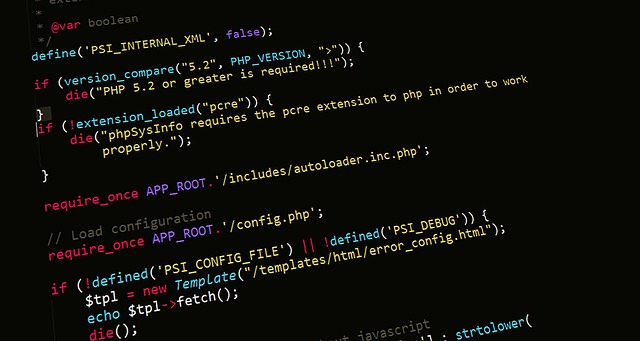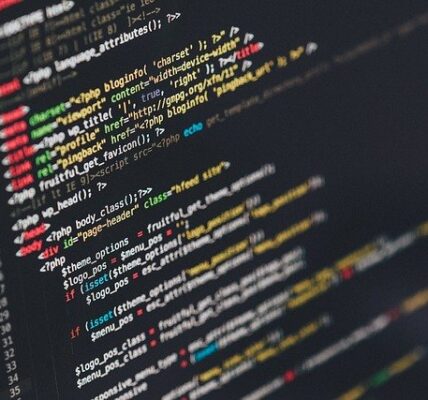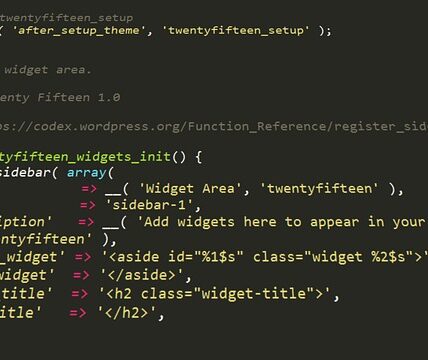When it comes to modern technology, React has made some waves recently. This industry-leading framework can give developers incredible amounts of control in designing their applications. One question that often comes up revolves around how React hooks are incorporated and used. What are the benefits of hooks and how do they interact with React projects? How can developers make the most out of them?
Reliance on React for software development has been quickly growing over the past few years, and this has created an urgent need for developers to understand the details of React’s functionality. Hooks are a powerful tool in React’s toolbelt that allow a certain level of reusability within code. Yet some developers still have difficulty in understanding how they can be implemented in their projects.
A deeper look into the role that hooks can play in modern web applications is necessary to understand the various complexities of working with React. In this article, you will learn what hooks are, how they integrate with React apps, and the techniques you can use to maximize the efficiency of your code. Additionally, you will get some practical advice on when and where it’s best to employ React hooks in different instances.
With this information, developers can put React’s power to use more effectively and create stunning projects that easily scale, update, and sustain. By the end of this article, you’ll be armed with a new-found knowledge about React and how you can use hooks to build amazing and intricate applications that reflect the full potential of the framework.

Definitions
React Hooks are a way to help create reusable logic across functional components in React. The purpose of React Hooks is to provide a way to tap into React features without having to use class-based components. This makes the code lighter, easier to read, and more maintainable for developers since they don’t have to rely on using class-based components and inheritence to use the features
A React Hook is defined as a function that takes in parameters and returns a value based off of those parameters. These hooks are able to access React features such as state, the context, lifecycle methods, and more. These hooks are composed of two parts – the hook itself, which takes in the parameters, and the initial setup, which uses those parameters to determine what the hook should do.
Hooks are designed to be used in functional components instead of with class-based components, which eliminates the need for inheritence and makes for more succinct and maintainable code. Hooks can be used in conjunction with other components to create reusable logic throughout a project, such as for managing state, fetching data, lifecycle methods, and more.
React Hooks are a great way to add additional functionality to a React project without having to rely on using class-based components and all the extra code needed to set them up. It allows for more maintainable and readable code, plus the ability to add reusable logic throughout a project.
Discover the Power of React Hooks
React Hooks are components of the React JavaScript library that allow developers to incorporate state and lifecycle features into a function component, without needing to write a class-based component. Hooks enable developers to reuse independent pieces of logic without needing to change their component architecture.
What Do React Hooks Do?
Hooks provide a state management system and a way to handle side effects from function components without relying on classes. This gives developers a simpler and unified codebase while avoiding inconsistencies between class-based components. Hooks are primarily used for accessing and managing state, but they can also be used for loading, componentDidMount, componentDidUpdate, and componentWillUnmount life cycle methods.
How Do React Hooks Work?
To access React Hooks, developers need to add the useState or useEffect hook to the top of their component. This will allow developers to access state within the function and manage side effects. React Hooks can be used to access state with useState and to manage side effects with useEffect. useState works similarly to this.state in class components, allowing developers to access and update state while useEffect runs and tracks each time a re-render occurs and performs any actions necessary.
Hooks are also beneficial for simplifying common logic patterns, such as toggling a variable and react when the data changes. The useMemo hook can be used to memoize values and help create performance optimizations. There are other hooks such as useContext and useReducer that make class components easier to work with and reduce the complexity of writing multiple classes.
Advantages of Using React Hooks
The primary advantage of using React Hooks is that developers can add state and lifecycle features directly to a function component, without needing to write multiple classes. This helps developers eliminate unnecessary components and simplify their software architecture. Hooks can also be reused between components, reducing the amount of code being written.
In addition, developers can use hooks to create logic patterns for toggling variables, creating performance optimizations, and accessing and managing state within a function component. This makes React Hooks easier to maintain, debug, and test than traditional class components.
List of React Hooks
- useState
- useEffect
- useContext
- useReducer
- useMemo
- useCallback
- useRef
- useImperativeMethods
Exploring React Hooks and Their Benefits
Understanding React Hooks
React Hooks are an important addition to the React library, giving developers a way to use React features without having to create a class. React Hooks make components easier to create and maintain, while giving them access to powerful React features such as state and context. But what exactly are React Hooks, and what makes them so special?
React Hooks are functions that give a component access to React features such as state and context without needing to create a class. They allow developers to use React features such as state and context more easily and efficiently, while also reducing the complexity of the code and making it easier to maintain. React Hooks can be used in a variety of scenarios, from creating components to managing state.
The Benefits of React Hooks
One of the biggest benefits of React Hooks is the ability to manage state without having to create a class. State can be managed in the same way that it can be managed in a class, but with Hooks, state can be managed in a much simpler way. This makes state management easier and more efficient, resulting in cleaner and more maintainable code.
Another benefit of React Hooks is that they can be used to access powerful features of React such as context. This means that developers can access features of React such as context without having to create a class. Instead, developers can access these features in a much simpler way, resulting in cleaner and more maintainable code.
Finally, React Hooks provide an easy way to use React features such as state and context in a consistent and easy to maintain way. Instead of having to rewrite code for each project, developers can use React Hooks to write their code once and have it work across projects. This makes React Hooks a valuable tool for developers looking to make their code more maintainable and efficient.
Putting Hooks to Work
How can developers take advantage of React Hooks and make their code easier to maintain? A good first step is to make sure to read the documentation for each Hook and get familiar with the syntax. Understanding the different hooks and their use cases is key to being able to use them effectively.
Once familiar with the syntax, the next step is to apply the Hooks in a consistent and maintainable way throughout the project. Using Hooks in the same way throughout the project will make it easier to develop and maintain over the long term.
Finally, consider using tools such as ESLint to keep React Hooks consistent throughout the project. ESLint can be used to configure rules for React Hooks, making it easier to maintain consistent code throughout the project. Using tools such as ESLint can make a big difference when it comes to maintaining code with React Hooks.
To fully take advantage of React Hooks, developers need to understand the basics of the syntax and be familiar with the different types of Hooks. Understanding how to use Hooks in a consistent way and keeping them consistent throughout a project are key to getting the full benefit of React Hooks. With the right knowledge and tools, developers can create components that are easier to maintain while taking advantage of the powerful features of React Hooks.
Unlock the Benefits of React Hooks Today
What are React Hooks?
React Hooks are ways of using functions that have access to React Component features, such as state and lifecycle methods, within simple JavaScript functions. React Hooks allow Developers to use functional components instead of class-based components, helping to quickly write smaller, reusable, and more maintainable code. By using components with React Hooks, developers can keep their applications up-to-date with the latest JavaScript features and maintainable.
Why Use React Hooks?
One of the primary benefits of React Hooks is their ability to help developers reduce the amount of code they have to write and maintain. By allowing developers to access the state of their components without the need for class-based components, they can create components quickly and easily. Additionally, by giving developers access to lifecycle methods without having to use classes, developers can focus on creating components with the same functionality, but with fewer lines of code.
Another benefit of React Hooks is that they are fun and easy to use. While class-based components can take developers quite a bit of time to get the hang of, it’s much easier to start building with React Hooks. Also, React Hooks make it easier for developers to collaborate on a project because their code is easier to read and it is easier to debug.
For developers who are looking to create robust, maintainable code, React Hooks offer a great solution. By allowing developers to keep their applications up-to-date with the latest JavaScript features, while still taking advantage of the power of React Components, developers can build applications with better performance and maintainability.
By using React Hooks, developers can create components faster and easier. As well, they can ensure that their components stay up-to-date with the latest features, while also reducing the amount of code that they need to maintain. With the right thought and practice, React Hooks can be a great tool to improve the quality of a project and help make it easier to maintain in the long run.
Conclusion
Hooks have become a powerful tool for React developers, but how do they work? Hooks are a way for React components to access state and lifecycle functionality without the need for writing class components. They provide a more concise syntax and allow developers to reuse code, improving the overall development experience.
With the continuing development of React, it is becoming increasingly important to understand the fundamentals of using hooks effectively. As React continues to evolve, so too do the applications made possible with hooks. While understanding the basics is important, remaining up-to-date with the newest versions of hooks can mean the difference between developing a successful React application or being left behind.
So, what will the future of React development and hooks look like? How can we make sure we are taking advantage of all of the potential that comes with React and hooks? Does the onus to keep up rest solely on us as developers? While the answers to these questions remain to be seen, one thing is certain – staying informed, up-to-date, and engaged is essential to continuing to evolve as developers. Follow The React Blog for updates and new releases to ensure that you are at the forefront of cutting-edge development.
F.A.Q.
Q1: What is a “hook” in React?
Answer: A “hook” in React is a special function that allows you to “hook into” React features such as state or lifecycle features from a functional component. Hooks enable a functional component to access features that were previously only available to class components.
Q2: What are the different types of React hooks?
Answer: There are two major types of hooks in React – state hooks and effect hooks. State hooks allow a functional component to manage its own state, while effect hooks allow a functional component to take advantage of React lifecycle features like “componentDidMount” and “componentDidUpdate”.
Q3: How do I use hooks to access state in a functional component?
Answer: The useState hook is used to access state in a functional component. It is used to declare a state variable in a functional component, set its initial value, and access and update its value in the component.
Q4: What is the useEffect hook?
Answer: The useEffect hook is used to allow a functional component to take advantage of lifecycle features like “componentDidMount” and “componentDidUpdate”. It is a combination of all the other effects and allows a component to perform side effects such as API requests or data fetching.
Q5: How do I use the useEffect hook to perform data fetching?
Answer: To use the useEffect hook for data fetching, you need to pass in a callback function as the first argument that contains the data fetching logic. This callback function will be invoked after the component is mounted and any update to the component’s state or props.




